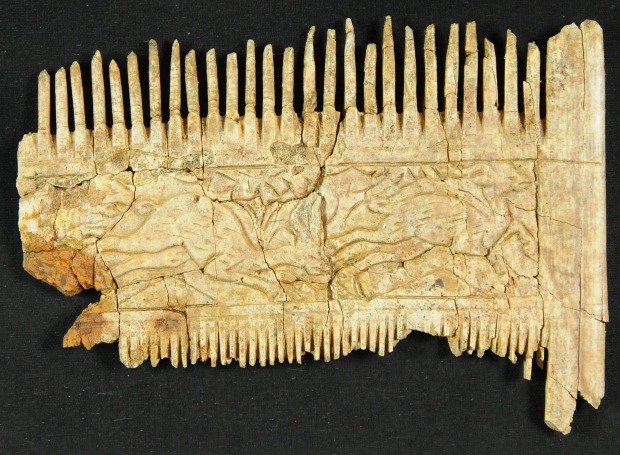Archaeologists have found the burial of an Alemannic horseman with weapons and an ivory comb
German archaeologists have discovered in Bavaria two burials of the Alemanns of the 6th century AD. The grave of the elderly rider contained weapons and a rare ivory comb depicting gazelles fleeing from predators. Among other things, the burial of an adult woman contained a high-quality ceramic dish, unusual for this region, made in Tunisia. The results of the excavations are reported in a press release from the Office for the Protection of Monuments of Bavaria.
In the territories of modern South-West Germany, Northern Switzerland, Eastern France and Western Austria at the beginning of our era, the Germanic tribal union of the Alemanni was formed, which was first mentioned by Roman sources at the beginning of the 3rd century AD. It was formed on the basis of a part of the Suevi, Yutungs, Semnons and Germundurs. From the 3rd century on, the Alemanni began to make regular raids on the Roman provinces, including invading Italy, but subsequently entered into an alliance with Rome.
The political consolidation of the Alemanni began only in the 5th century, but already at the turn of the 5th-6th centuries they were defeated by the Frankish king Clovis I and subordinated to his state. Subsequently, the Alemanni managed to form their own duchy in the historical region of Swabia, which played a prominent role in the Holy Roman Empire. Beginning in the 5th century, the Alemanni tradition spread the tradition of burying the dead with a large number of burial gifts, showing the wealth and status of the family. The inventory could include items of horse harness, weapons, jewelry and imported goods.
German archaeologists have excavated the Nördlingen Ries region in southwestern Germany, where they have found two Alemannic burials. The works were carried out on the territory of the municipality of Deiningen as part of the preparation of the site for development. Researchers have unearthed rare luxury items in early medieval graves not previously found north of the Alps.
One grave contained the remains of a man who died at the age of 40-50, who, apparently, belonged to the prominent representatives of his society. The burial contained weapons – a long sword, a spear, a shield, a battle ax, as well as bronze cymbals. Spurs, the remains of a bridle, and the remains of a horse indicate that the man was a rider. In addition, the remains of a bag were found in the grave, where there were scissors and an ivory comb – items for the care of hair and beard.
Archaeologists noted that combs of such high quality, like other carved ivory objects, are extremely rare for the 6th century. The artifact depicted a hunting scene in which gazelles appear to flee from predators. The researchers emphasized that they do not know of comparable objects from this period, which makes the find valuable not only for archaeologists, but also for art historians. Archaeologists have clarified that the past rare finds of carved ridges dating back to the early Middle Ages were decorated with Christian motives.
Another grave contained the remains of a woman who died at the age of 30–40, who was buried along with jewelry, food (for example, eggs), and a weaving sword. In addition, archaeologists have discovered an unusual high-quality ceramic dish related to the so-called African red dishes, which were made in the territory of modern Tunisia. A cross was depicted in the center of the dish, and some symbols were carved along the edges, the nature of which remains incomprehensible to scientists. Such items have never been found north of the Alps.
Photo: Bayerisches Landesamt für Denkmalpflege









